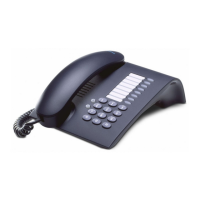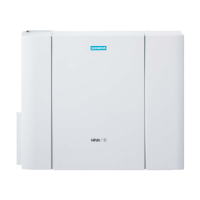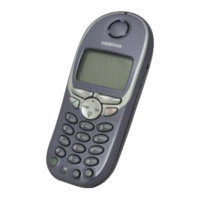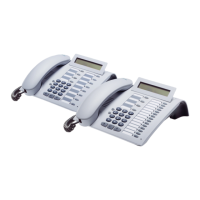Call management (CM)
Initial operation
A31003-K16-X001-3-7620
,
07/99
6-10
Hicom 100 E Version 2.1, Service manual
Block 2
Incoming calls/call forwarding
15193
External calls, day
A reference is made to one of 16 call destination lists in block
3 for each extension in these tables.
In each of these tables, you can enter the required references
to the call destination lists for all extensions (11–74) as well as
for 8 groups (881–888).
With call allocation, the internal extension number always re-
fers to a call destination list, even if this differs from the DDI
number. (This applies in particular with point-to-multipoint con-
nections P-MP)
15192
Internal calls
15194
External calls,
night
Call allocation continues in block 3 (call signalling).
Block 3
Incoming calls/call forwarding
15191
Call dest. lists
16 call destination lists are available.
4 entries can be made in each of these lists.
The extensions and/or groups entered in these lists are called
in consecutive order (# for system search ) in accordance with
the "number of ring attempts" (CFW time).
If group numbers are entered, the further allocation of the call
(call signalling) takes place in block 4.
15195
No. of ring attempts
The required call forwarding timeout can be specified in each
call destination list.
The value input equals the number of rings permitted before
the call is forwarded.
15196
Common ringer,
PEN
Either the internal extension number of an analogue extensi-
on for connecting a second ringer or an actuator 1–4 is en-
tered.
A telephone can be connected instead of the second ringer
(e.g. a second telephone such as a mobile telephone that
also rings when another telephone is called).
15197
Common ringer,
mode
Enter whether the function defined under 15196 (second rin-
ger, actuator) is to be activated immediately or after the first
call forwarding timeout.
Block 4
Incoming calls/group setup
15161
Ext. called In this table, up to 8 group extensions can be entered for each
of the 8 possible user groups (with extension numbers 881–
888).

